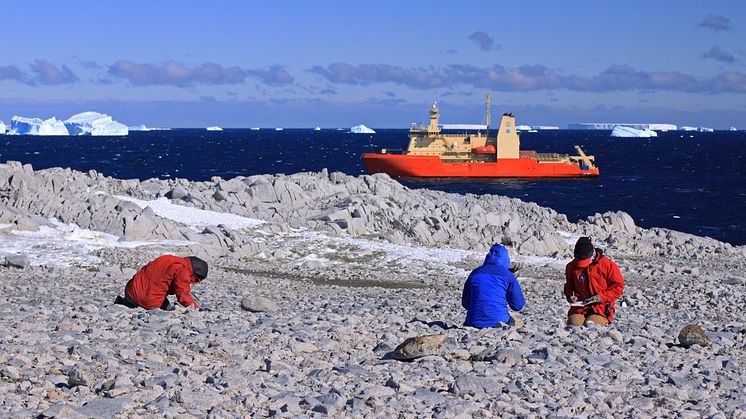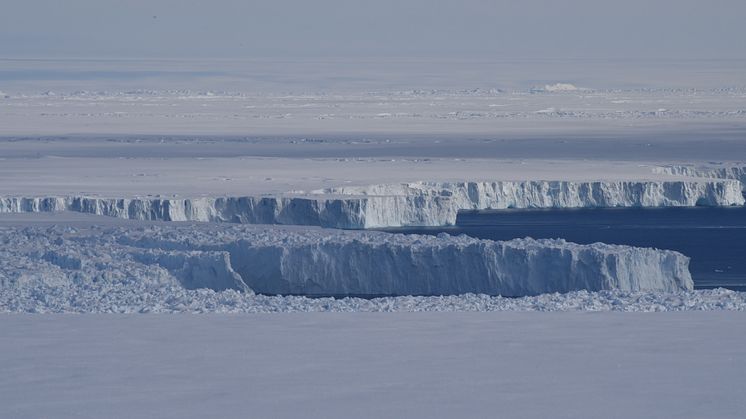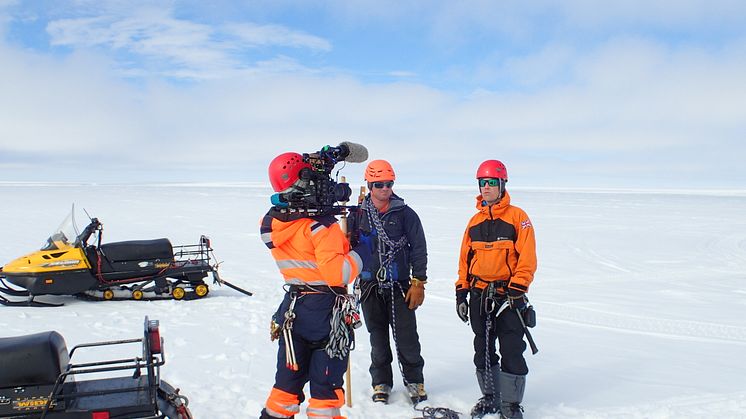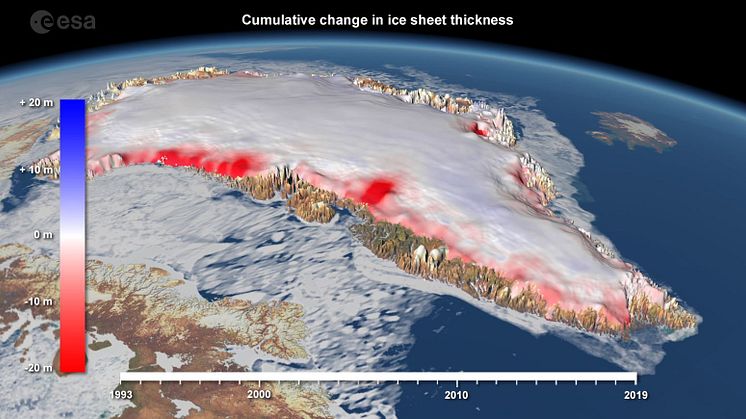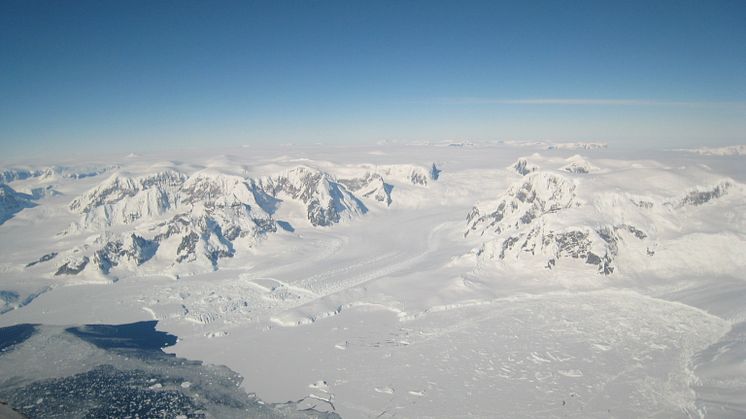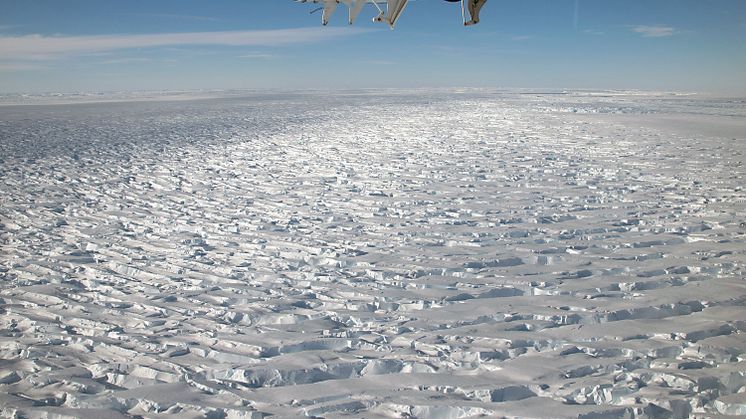
Press release -
Present Antarctic deglaciation may be unprecedented in last 5,000 years, study finds
Two major glaciers in West Antarctica may be losing ice faster than they have in at least the last 5,000 years, finds a study involving researchers from Northumbria University.
The rapidly melting glaciers could lead to major sea level rise over the next several centuries.
The findings of the study have been published today (Wednesday 9 June) in Nature Geoscience.
Over the past few decades, the West Antarctic Ice Sheet has retreated and thinned at accelerated rates. The Thwaites and Pine Island glaciers that extend deep into the heart of the ice sheet are of particular concern.
These glaciers are susceptible to rapid melting because they sit on an inland-sloping bed where warm ocean water can flow underneath floating parts of the glacier tongues and erode the ice sheet from its base, which can lead to runaway ice loss.
Runaway retreat of these two glaciers could reduce the size of the West Antarctic Ice Sheet, potentially contributing as much as 3.4 metres to global sea level rise over the next several centuries.
However, it is hypothesized that the glaciers may have been much smaller in the geologically-recent past – namely, during the mid-Holocene, an era over 5,000 years ago that was even warmer than the present day.
If they were smaller in this era, they must have subsequently re-grown, raising the hope that they could do this again in the future.
An international team of researchers who form part of the major UK/US International Thwaites Glacier Collaboration looked at the relative sea-level change close to the glaciers during the past 5,000 years as an indirect way of determining whether they were substantially smaller than present in the mid-Holocene and then re-expanded.
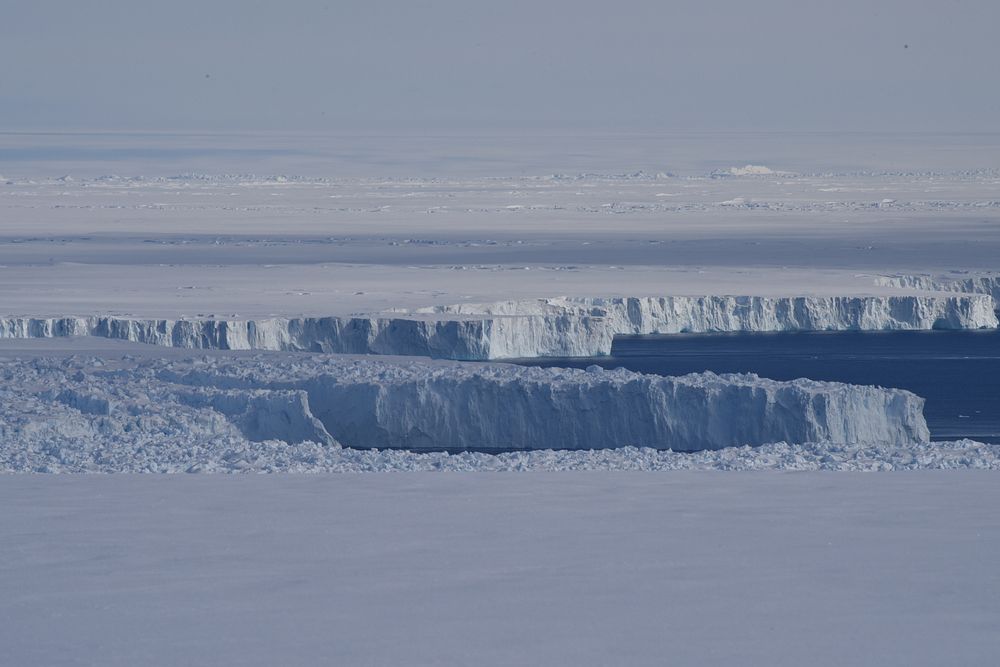
Relative sea level at a location depends on the amount of water in the ocean but also, importantly, on local changes in the shape of the earth’s crust due to loading and unloading of glacier ice. Thus, reconstructions of relative sea level over time can be used to identify large-scale changes in glacier advance and retreat.
The team used radiocarbon dating of shells from ancient beaches that are now elevated above modern sea level to reconstruct changes in relative sea level over time. The shape of the resulting curve is related to the growth and retreat of the glaciers.
Professor John Woodward, a leading glaciologist at Northumbria University and Pro-Vice-Chancellor for the Faculty of Engineering & Environment, co-authored the study. He explained: “It is hugely important to gather evidence on how the ice sheets behaved and responded in the past. With this knowledge and understanding, we can better predict how they may behave in future.
“Using radiocarbon dating of shells and bedrock samples that indicate past cosmogenic exposure, we believe that the ice had thinned to a point during the mid-Holocene era and has been relatively stable over the last 5,000 years, with no evidence of large-scale retreat or advance until very recent times.”
“Relative sea-level change allows you to see large-scale crustal loading and unloading by ice,” added Brenda Hall, corresponding author of the study and Professor at the University of Maine's School of Earth and Climate Sciences and the Climate Change Institute. “For example, glacier readvance, which would result in crustal loading, would slow the rate of relative sea-level fall or potentially even cause submergence of the land below sea level.”
The results showed a steady fall in relative sea level over the last 5,000 years. Moreover, the researchers found that the rate of relative sea-level fall recorded by the shells was almost five times lower than that measured today. The most likely reason for such a large difference is recent rapid ice loss in the region.
"Our work suggests that these vulnerable glaciers were relatively stable during the past millennia, yet their current rate of melting is accelerating and raising global sea level,” says co-author Dylan Rood, senior lecturer at Imperial College London. “These currently elevated rates of ice melting may signal that those vital arteries from the heart of West Antarctic Ice Sheet have burst, leading to accelerating flow into the ocean that is potentially disastrous for future global sea level in a warming world."
The researchers also compared their results to existing models of the dynamics between ice and the Earth’s crust. They found that the models did not accurately represent the sea-level history revealed by their data. This study helps to paint a more accurate picture of the history of the region and suggests that the models need refining.
Although the new evidence does not exclude the possibility of minor fluctuations of the Thwaites and Pine Island glaciers over the past 5,000 or so years, the researchers concluded that the simplest interpretation of their data is that these glaciers have been relatively stable since the mid-Holocene until recent times – and that the present-day rate of glacier retreat may be unprecedented over the last 5,000 years.
With no evidence from the relative sea-level data that the glaciers have recovered from a smaller-than-present configuration in the last few thousand years, the possibility remains that the present accelerating retreat of these glaciers could lead to ever-increasing ice recession into the heart of the West Antarctic Ice Sheet with consequent implications for global sea level.
The study, Relative sea-level data preclude major late Holocene ice-mass change in Pine Island Bay is now available to view in the journal Nature Geoscience.
It was led by the University of Maine and involved researchers from the universities of Northumbria, Durham and Imperial College London in the UK, Tulane in the United States, British Antarctic Survey and the Berkeley Geochronology Center.
Northumbria University is ranked second in the UK for research power in geography and environmental studies, according to the results of the 2021 Research Excellence Framework. 90 per cent of research outputs from this area are rated as being either world-leading or internationally excellent.
Topics
Categories
Northumbria is a research-intensive modern university with a global reputation for academic excellence. Find out more about us at www.northumbria.ac.uk --- Please contact our Media and Communications team at media.communications@northumbria.ac.uk with any media enquiries or interview requests ---







